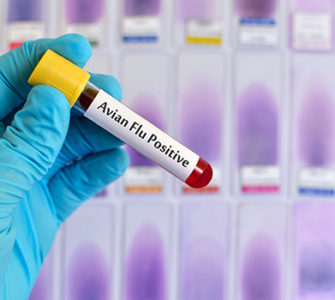H9N2 could devastate America’s poultry industry
H9N2, a low-pathogenic avian influenza virus common in parts of Asia, the Middle East and North Africa, would be difficult to control if introduced to the US, said David Suarez, a research leader with the USDA Agricultural Research Service.
Over the last 50 years, the nation’s poultry industry has grappled with low-pathogenic viruses. But unlike the other viruses, the US poultry industry lacks a response plan for H9N2, Suarez said.
The key difference between those viruses and H9N2, he added, is that in the US they are mostly adapted to wild birds and have had only minimal impact on poultry.
On the other hand, H9N2, which has been circulating overseas for about 20 years, can infect poultry much easier than the other low-pathogenic viruses and could be devastating for America’s poultry industry.
“There’s not anything particularly unusual about the virus except that it is more poultry adapted than the viruses we routinely see,” Suarez said.
On average, high-pathogenic viruses kill at least 75% of the birds in a laboratory, and low-pathogenic viruses kill fewer than 75%. However, in-field mortality rates from low-pathogenic viruses can rise dramatically when combined with real-world conditions — immune suppressions, environmental conditions such as high ammonia concentrations and lingering infectious diseases like infectious bronchitis.
The virus is one of the most common low-pathogenic infections in many regions of the world. It is endemic in China and Vietnam; the Indian sub-continent, particularly India, Bangladesh and Pakistan; and several Middle Eastern countries, including Iraq, Iran, Saudi Arabia, Israel, Egypt, Morocco, Tunisia and Libya.
Although it has not been documented in the US, scientists have occasionally seen strains from a North American source that infects poultry but generally doesn’t stick around very long.
“There hasn’t been any surveillance to show that wild birds are carrying this,” Suarez said.
He explained the virus could be introduced to the US from two possible sources: food products that were either not properly cleared before being brought into the country, or imported birds that went around proper testing by officials or were somehow missed in routine surveillance.
Suarez noted that the nation’s surveillance system has the capacity to quickly identify the virus. But, he added, the larger issue is how to respond when there is a diagnosis. Under current regulations, an outbreak of the H9N2 virus will be designated a state or industry matter rather than a national or USDA one.
He said response plans that work for the H5 and H7 viruses will work for H9N2 as well, but H9N2 is not included in the current response plan.
“We do need a response plan and how exactly that needs to be set up I don’t know,” he said, adding that he plans to speak with other researchers to get a sense for what kind of response plan they’d like to see.
Posted on February 6, 2018

















